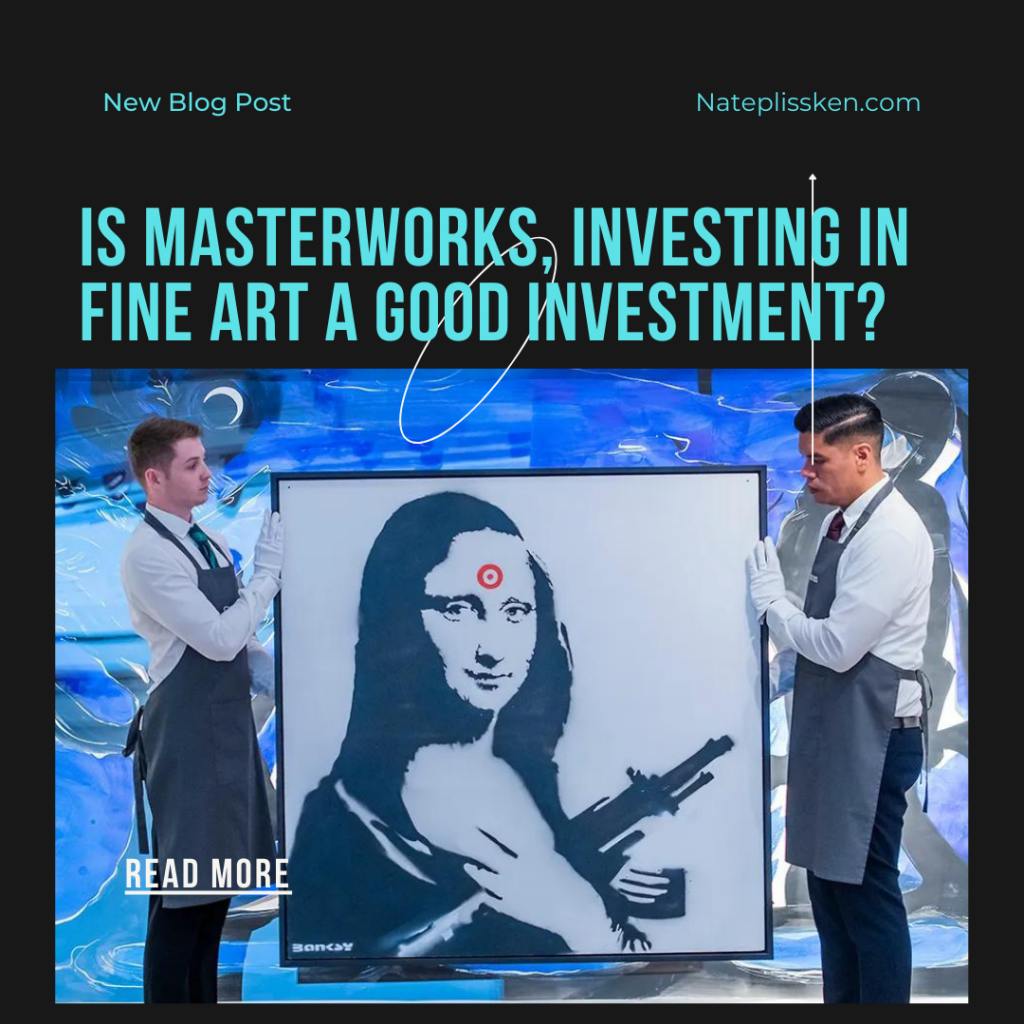
Is Masterworks A Good Investment?
This is an alternative investment class that I did not consider because it has traditionally only been for the uber rich. But if you follow the theory that the rich get richer and the poor get poorer, it would make sense to capitalize on this. Wealth inequality is a terrible thing. But that being said—if you can’t beat them, join them. Become rich by doing what the rich do.

The Price of entry to this Market is over 1 Million dollars.
You can see why this has been an asset class only for the uber rich because of the cost to buy fine art is millions of dollars. Try buying a Picasso you are looking at 15 million at least, but Picasso and Monet and Banksy are the art the types of art that have shown the predictable returns over the years.
What Masterworks offers its investors.
Masterwork offers diversified exposure to fractional ownership in Contemporary, Post-War, Modern, and Impressionist paintings. They form each painting into an LLC, a limited liability company, registered with the SEC. They sell shares of stock of that painting just like shares of publically traded companies.

Because of this fractional ownership of the painting, Masterworks gives smaller investors access to the elite fine art market.
What is the minimum investment for Masterworks?
- Masterworks works are available for non-accredited investors. But varying answers have been given to what is the minimum investment required. On the phone, I was told $15,000 another blogger and Youtuber said that any amount could be invested.
- Note: The Secondary market is open to the general public. So hypothetically, any investor could buy as little as one share of a work on Masterworks Secondary market. And it would make sense that they want their secondary market to have as much liquidity as possible.
Why would you want to invest in Fine Art anyway?
For one thing, it is an asset class that is decoupled from the stock market, real-estate and gold. With investors fearing the stock bear market, or even a crash; they are looking more and more for ways to keep their purchasing power long term and grow their wealth. This asset class, fine art, has shown little to no correlation to the stock market at all.


A store of value.
Fine art has been an incredible store of value over the last 100 years. We have seen an increase in value, and with the growth of the superwealthy, an increased demand. There are no new Picasso being painted now with Palblo’s death in 1973. What’s even more limiting to the supply is that when fine art is donated to museums, it is off the market forever. So demand has gone up but supply has dwindled.

An investment that has always appreciated in value.
Obviously, all investments have risks. But looking at the past appreciation of fine art, collectors have seen on average a conservative 13% yearly return. While past returns are no guarantee of future returns, it is about all anyone can go on. Macro concerns of high inflation make sense that this asset class should keep up an out perform inflation.
Investing in fine art has appreciated faster in most cases over the past 100 years more than the S&P 500.

Fine Art is a global market.
The Fine Art Market is a 65 billion dollar industry of as 2022, The United States is the biggest buyer currently of Fine-Art, but China and France and England and other countries make up a big piece of the market as well. Why is this important? If we see some unforeseen economic catastrophe in one country, it doesn’t stop the art market globally.

So what is the catch? What are the downsides to Investing in Fine Art?
A lack of capital liquidity, meaning paintings can’t be sold l immediately after purchasing them. Masterworks plan to hold paintings 3-10 years before selling them. And they even reserve the right to sell them or not sell them at anytime. The goal is to make a profit on the investment, but there is no guarantee of profit. But masterworks has solved a liquidity issue to some degree by offering a secondary market for shareholders to sell their shares of painting to other investors. The market sets the price, Masterworks in no way sets the price of the secondary market.
1.5% annual share dilution.
The management fees come in a 1.5% annual share dilution. And you can’t sell the painting and Masterworks will not sell for 3-10 years. And Masterworks takes 20% of the profit split.
The knowledge gap barrier to entry
But for most non fine art suave investors, where do you start? This is a big hurdle. Think about it, not all art has appreciated only fine art. The idea of dealing with auction houses is difficult and unaffordable traditionally, but with Masterworks and investor can diversify in multiple works for a small investment.
It could be fun to brag that you own part of a Picasso.
The lack of liquidity makes this an investment for long-term investors. Fine art has its pleasing aesthetic appeal. And you may feel good about investing in art instead of Raytheon—Make love, not war. But do your do diligence, but the fine-art market could be a great hedge against inflation and an alternative to a potential bear stock market.

Investing in fine wine.
Another curious alternative asset class is fine wine. Check out my full blog post here, with some unique ways to get exposure to this asset class with out breaking the bank.
